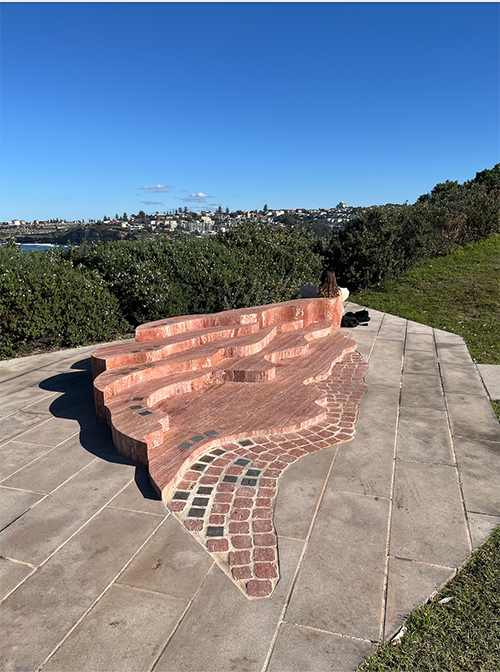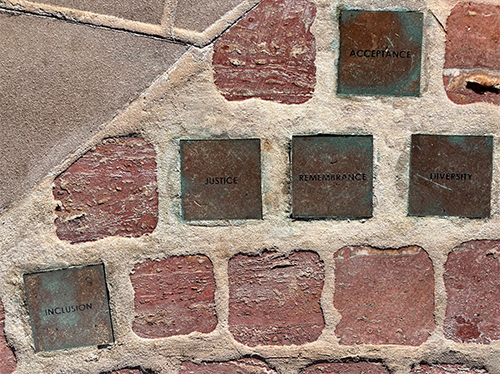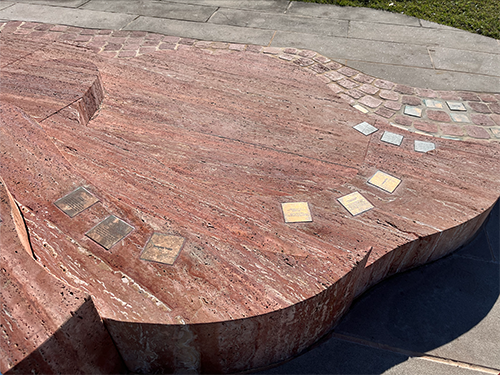- Winter 2024
- An overview of the Report of the Special Commission of Inquiry into LGBTIQ hate crimes
An overview of the Report of the Special Commission of Inquiry into LGBTIQ hate crimes

Introduction
The Special Commission of Inquiry into LGBTIQ hate crimes (‘the Inquiry’) was established on 13 April 2022 by letters patent issued in the name of the Governor of New South Wales pursuant to the Special Commissions of Inquiry Act 1983 (NSW). The Hon Justice John Sackar was appointed as commissioner. The terms of reference required the commissioner to inquire into, and report to the Governor upon, the manner and cause of two categories of unsolved deaths. In broad terms, those two categories embraced deaths that were suspected hate crime deaths actuated by LGBTIQ bias during the period from 1970 to 2010.
The Inquiry held 17 public hearings, comprising 66 sitting days, and an additional 48 private hearings. It received and reviewed more than 150,000 separate documents, and a total of 83 witnesses gave oral evidence. Nine counsel were involved in assisting the commissioner during the life of the Inquiry. The Inquiry’s final report was delivered to the Governor on 18 December 2023 (‘the Report’).

The New South Wales Police Force: Investigative practices, and approach to the Inquiry
A significant component of the Report addresses the investigative practices and procedures of the New South Wales Police Force (‘NSWPF’) and others in relation to homicides over time – what became known as the ‘Investigative Practices Hearing’. That aspect of the Inquiry was prompted by recurring themes that emerged in the investigations of the deaths under consideration, being themes that bore upon the reason that those deaths remained ‘unsolved’. Inadequate investigations, misplaced records, insufficient resourcing and lost opportunities emerged as such common themes from the Inquiry’s investigations that it became ‘essential’ for those questions to be addressed in more holistic fashion: at [35].
The commissioner found that many of the investigative and related steps taken (or not taken) by the NSWPF were not in compliance with proper police practice at the relevant times; he also found that the Unsolved Homicide Team (‘UHT’) was processing unsolved homicides too slowly and with insufficient frequency: at [73]. The UHT was established in 2004 under the rubric of the Homicide Squad. It presently aims to monitor, review and reinvestigate certain historical unsolved homicides and suspicious missing persons cases. The task confronting the UHT is self-evidently significant in its scale and gravity, but the commissioner regarded it as ‘extraordinary’ that 20 per cent of unsolved homicide cases have never been screened, triaged or reviewed — including a number of cases falling within the Inquiry’s terms of reference: at [8.501]–[8.502].
A substantial number of the unsolved homicide cases considered by the Inquiry were plagued by difficulties with the availability and quality of exhibits and records. The scale and prevalence of the problem was suggestive of widespread deficiencies in both systems and training within the NSWPF, at least among unsolved homicides: at [8.709]–[8.711]. In some cases, entire investigative files were not able to be produced. In others, it could not be ascertained whether particular investigative steps were not taken at all or were taken and simply not recorded. In many instances it was unclear whether material had been lost, destroyed in an authorised manner or destroyed in an unauthorised manner: at [15.6]. The destruction or loss of exhibit material, and the failure by the NSWPF to produce records explaining what had occurred in relation to this material affected the Inquiry’s ability to carry out its work: at [8.698].
These issues should have been apparent to the UHT for some time: at [8.685], [8.723]–[8.724]. The failure to identify those issues, and to conduct a thorough audit during the UHT’s initial review of unsolved homicides following its inception, represented both a significant oversight and a lost opportunity to enhance the efficiency and efficacy of future reviews. It also meant that forensic opportunities that existed in 2004 may now have been lost: at [8.686].

The commissioner ultimately made several recommendations directed at improving the processes of the UHT and NSWPF exhibit management. Importantly, however, the Inquiry found that the NSWPF has implemented substantial changes in respect of its recordkeeping and exhibit management policies since the original investigation into these deaths. As a result, the commissioner was satisfied that past failures in police practice and procedure in this area are unlikely to recur: at [8.33].
The Report also addresses the relationship that the Inquiry itself had with the NSWPF since the commencement of the Inquiry in May 2022. The response of the NSWPF to the Inquiry was described by the commissioner as ‘adversarial’ and ‘at times, defensive and unhelpful’: at [40], [108]. The commissioner regarded the NSWPF as ‘having fallen short of what I expected of it as a model litigant’: at [111], [15.56]. As against that, the commissioner acknowledged that there were significant occasions when the NSWPF recognised its own past institutional failings and took proactive steps – before recommendations had been made – to address matters of concern: at [15.43], [15.177].
The Report also explores the dramatic change in the procedures followed by the NSWPF since 2000 (in particular) with respect to the testing of exhibits. One of the key developments in forensic science since 1970 has been the advent of DNA testing and advances in the capability and sensitivity of DNA technology. The commissioner remarked that one lesson to be learned from the experience with DNA in the 1990s is that decisions about lines of investigation, and the collection and storage of exhibits, should be informed by the possibility that DNA technology and the like could become much more significant in coming years: at [8.321]. The commissioner perceived there to be significant scope for these improvements in DNA technology to contribute positively to the future work of the NSWPF and encouraged the NSWPF to make allowances for this in their ongoing exhibit practices: at [8.325].
Progress made by the Inquiry
The challenges faced by the Inquiry were significant and multifaceted. They included not only the availability of records and the Inquiry’s relationship with the NSWPF, but also the sheer scale of the task entrusted to it — a task that the commissioner described as ‘daunting’: at [162]. In the commissioner’s words, the Inquiry was ‘asked to find answers for an unclosed category of deaths where all the investigative resources of the NSWPF have previously failed, in many cases for between 30 and 50 years’: at [161].
The Inquiry was ultimately unable to solve many of the deaths it examined. It met ‘impassable obstacles in a frustratingly large number of those deaths’, principally due to an absence of records, exhibits, witnesses or initiative on the part of earlier investigations: at [21]. The commissioner found that many of the deaths under consideration ‘were investigated poorly, and their chance for resolution continues to suffer as a result of investigative shortfalls and historical harmful attitudes within the NSWPF’: at [29].
Nevertheless, in a number of deaths, the Inquiry made breakthroughs or other significant progress, and lines of possible future investigation were revealed: at [27]. The NSWPF and other investigative agencies may yet be able to build on the work of the Inquiry. The Report publicly addressed 32 deaths and found that there was reason to suspect that LGBTIQ bias was a factor in 25 of those deaths: at [58].
Recommendations
The Report contains 19 public recommendations, including many directed at the NSWPF. An additional 22 confidential recommendations were made. The public recommendations included:
- that applications be made for a fresh inquest in relation to the deaths of four individuals, in light of the evidence considered by the Inquiry and the findings made by the commissioner as to manner and cause of death;
- that the NSWPF take steps, including DNA analysis, to eliminate suspects who may have been prematurely excluded from the investigation into the death of one individual;
- that the NSWPF conduct a systemic review or audit of what exhibits have been retained in relation to each death and their current location;
- that the UHT promptly identify exhibits that should be submitted or resubmitted for forensic testing in light of possible technological advances;
- that a review be undertaken of the practices, procedures and resourcing of the UHT with a view to, inter alia, enhancing the management of the investigation of unsolved homicides within New South Wales;
- that additional mandatory and ongoing training be provided to NSWPF officers concerning the LGBTIQ community, including the indicia of LGBTIQ bias crime; and
- that the NSWPF engage an appropriately qualified expert or experts for the purpose of (among other things) ensuring that the NSWPF practices in the area of bias crimes are aligned with international best practice.
As is apparent, certain of the recommendations made by the commissioner were directed towards the relationship between the NSWPF and the LGBTIQ community, and the identification by the NSWPF of indicia of bias crimes. Historically, bias crimes have not been an area of sustained focus within the NSWPF: at [10.127], [10.163]. While the Report recognised and encouraged efforts made by the NSWPF since 2020 in this respect, it identified some resistance in the NSWPF to acknowledging the extent of the hostility experienced by LGBTIQ people in the 40-year period under examination: at [98], [10.167]. Not only does hate crime (including bias crime) have grievous and long-lasting impacts on individuals, it terrorises — and is intended to terrorise — communities who are already frequently vulnerable or marginalised. The commissioner therefore regarded it as ‘crucial’ that NSWPF officers are alert to signs that a crime may be a hate crime: at [8.174]. The apparent lack of awareness within the NSWPF (particularly historically) concerning the LGBTIQ community gave rise to the twin possibilities that police may not detect or recognise hate crimes, and that investigative opportunities may be missed: at [8.518].
The commissioner also considered it likely that officers investigating some of the cases in question were affected by conscious or unconscious bias towards members of the LGBTIQ community: at [8.225]. The role, if any, that such bias played in historical investigative decisions is ‘unknowable’: at [8.225]. However, the commissioner considered it important to acknowledge the likelihood that, in some instances before the Inquiry, it did in fact play a role — a conclusion not lightly reached: at [8.226]. So much was not, however, a criticism of any individual officer, many of whom may have acted free from bias: at [8.225]–[8.226]. At an institutional level, the commissioner was satisfied that the NSWPF has taken some steps in the intervening period towards engaging more productively and respectfully with the LGBTIQ community: at [15.188].

Conclusion
The task set for the Inquiry was a confronting one. All of the deaths in question concerned individuals whose lives were cut tragically short. Each death was suspected to be a homicide that was motivated, at least in part, by hatred for the victim simply because of their identity. Many of those victims had suffered discrimination throughout their lives. Institutional and community responses to these deaths was lacking, and in many cases, the immediate effect of violence was compounded by the response of the NSWPF and its members — a response which frequently reflected the shameful prejudice that existed in society more broadly: at [5]–[6]. The Inquiry acknowledges the profound impact that hate crime has had on the LGBTIQ community, and on the loved ones of the victims of such crimes, and endeavours to assist in providing some measure of closure to the community in relation to the deaths that it examined.

